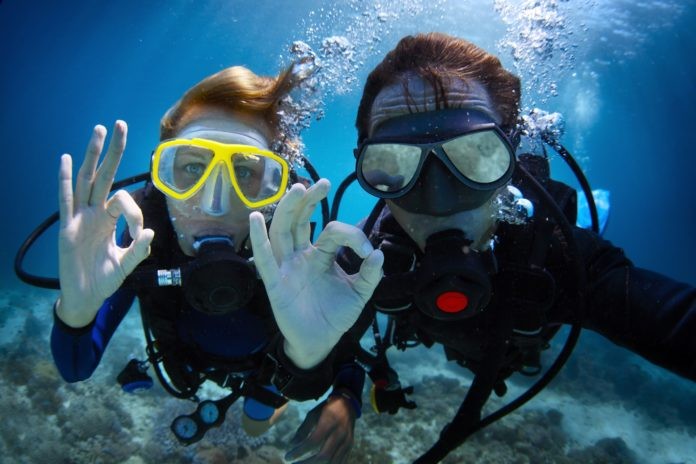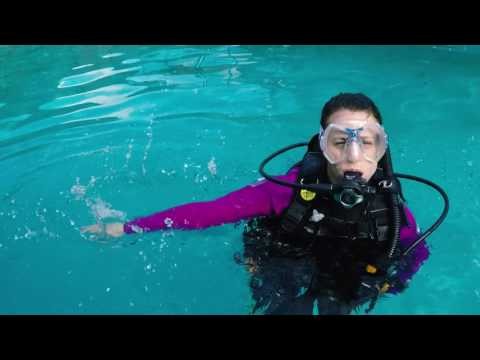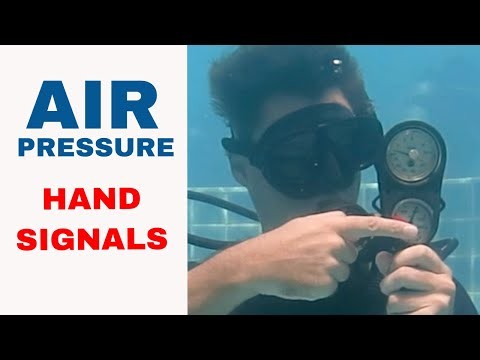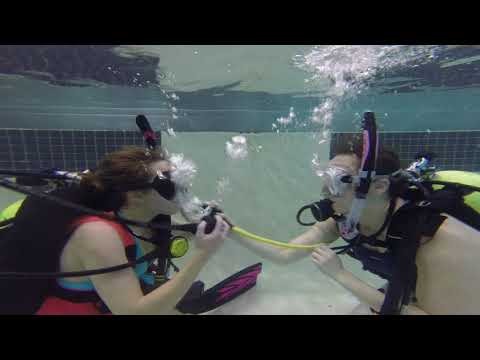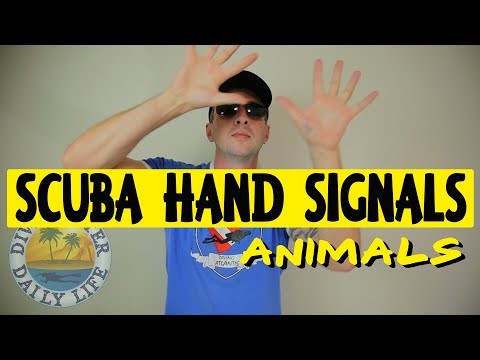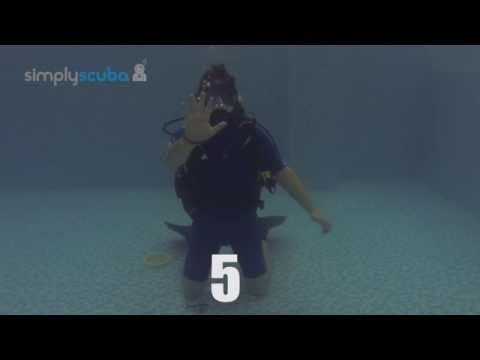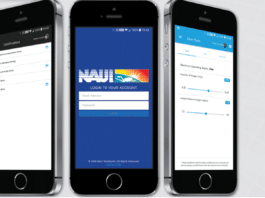Most divers consider the silence of the underwater world a blessing.
However, being unable to talk underwater does not remove the need to communicate; that is where scuba diving hand signals come in. Unfortunately, most divers do not have the time or dedication required to learn full sign language (since most of us are envious of divers fluent in sign language and have an entire conversation underwater).
However, divers can learn a set of rudimentary hand signals that communicate the essential information needed on a dive. Currently, hand signals exist for everything from tank pressure and decompression status to up, down, and, crucially, signs of danger and low air!
Basic Communication Signals
Basic scuba diving hand signals convey the basics of any scuba dive, including direction (up and down) and signs like okay, and “I have a problem.” Bear in mind the sign of a problem may not necessarily mean an emergency; it can be a much more benign issue.
Whether a diver needs to tighten their fin strap or has problems equalizing on a descent and needs to go much slower, or cannot descend and must cancel the dive. The sign of a problem is typically followed by another sign or pointing at the issue at hand.
Common scuba diving hand signals include:
- Okay: the first sign you will probably learn is performed by holding your hand up palm out and linking your thumb and index finger with your other three in the air.
- Problem: the 2nd hand signal you will probably learn is performed by holding the hand out in front of you with the palm facing down and the fingers spread. The hand is then rotated from side to side.
- Stop: Easily performed; the arm is extended with the palm facing out and the finger up, in the well-known sign to stop.
- Up & Down: with the finger bunched up and the thumb extended, the thumb is pointed up for ascent and down for the descent.
Air Supply Information Hand Signals
Air supply signs are one of the most critical scuba diving hand signals you can master. They are crucial to safely conducting dives and avoiding out-of-air scenarios.
The signal to ask how much air someone has is pretty simple. You can hold your gauge or console with one hand, show it to your buddy, and tap on it with two fingers. Alternatively, keep one hand, fingers extended, palm facing up, and tap on your hand with two fingers.
Now things get interesting, and there are two general conventions depending on where you are diving in the world and using imperial or metric gas measurements.
In metric, using both hands to create a T shape indicates 100 bar. 50 bars can be displayed by a closed fist (some locations use an open palm with all five fingers extended). 10 to 40 bar is indicated by holding up one to four fingers. For instance, if you wanted to show 120 bar, you would make the T shape with both hands and then hold up to fingers. If you want to indicate 80 bar, show a closed fist (or open palm with five fingers) and then hold up three fingers.
Using the imperial system is a little more tricky.
Thousands of PSI are indicated by extending one arm and placing the required fingers on the forearm. You then show hundreds of PSI by holding up the right number of fingers, with each finger representing 100 PSI. to indicate 2400 PSI; you would extend your forearm, then, using your other hand, place two fingers on it, followed by holding up four fingers.
To indicate 1200 PSI, you would put one finger on your forearm and then hold up two fingers.
One thing to be aware of with air supply scuba diving hand signals is that there is more than one convention around the world. So check with your dive guide or buddies which one everyone is using to avoid confusion.
Emergency Scuba Diving Hand Signals
Needless to say, emergency scuba diving hand signals are about as important as it gets. By far, the most important signal is the out-of-air sign. This is performed by using the hand to gesture a motion across the throat in the traditional signal of throat cutting.
This should be followed by signaling with the hand toward your mouth with an open palm in a backward and forward motion to indicate sharing air.
For other dangerous situations, the signal for danger is an extended arm with a closed fist (similar to a punch motion). The movement should be performed with the arm toward the danger and followed up by pointing at the threat.
Marine Life Scuba Diving Hand Signals
There are hundreds of different signs to signify different marine life. Some scuba diving hand signals are the same around the world, like an extended palm to the front of the forehead, which is universal for sharks. A wide range of regional variations exists depending on the local marine life.
From mantas and sunfish to turtles and stonefish, there is virtually a signal for every species. Before you head out to any specific location, please familiarize yourself with all the hand signals used in the area and what they mean. Certain marine life signals sometimes mean an entirely different creature in another location, so that things can get confusing!
Signaling Numbers Like A Pro
The ability to signal numbers when scuba diving can be critical. This is especially true in more advanced dives since you must pass more accurate information than a quarter or a half. In addition, in all likelihood, you are using one hand to do something, so you must be able to indicate every number from one to 10 using one hand only.
Signaling one to five is pretty simple. Hold your hand out with your palm facing out and your fist closed. Raising your index finger is one, raising your index and middle finger is two, and so forth to five, with all five fingers extended.
Six through nine is a little more unusual; rotate your palm 90 degrees to the left (assuming you are using your right hand) with the back of your hand now facing your buddy.
With your hand in a fist sticking out, your index finger is six, your index and middle is seven, and through all four main fingers up to nine. We do not use all five fingers to indicate 10; instead, ten is signaled by indicating a one followed by a zero.
The sign for zero is identical to the “Okay” sign; only the middle, ring, and pinkie fingers are kept closed and next to the index finger forming a ring with the thumb.
